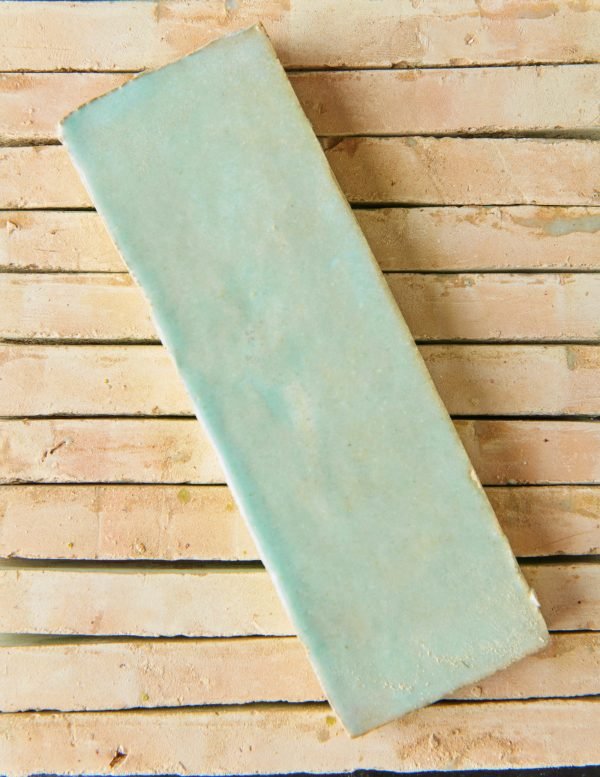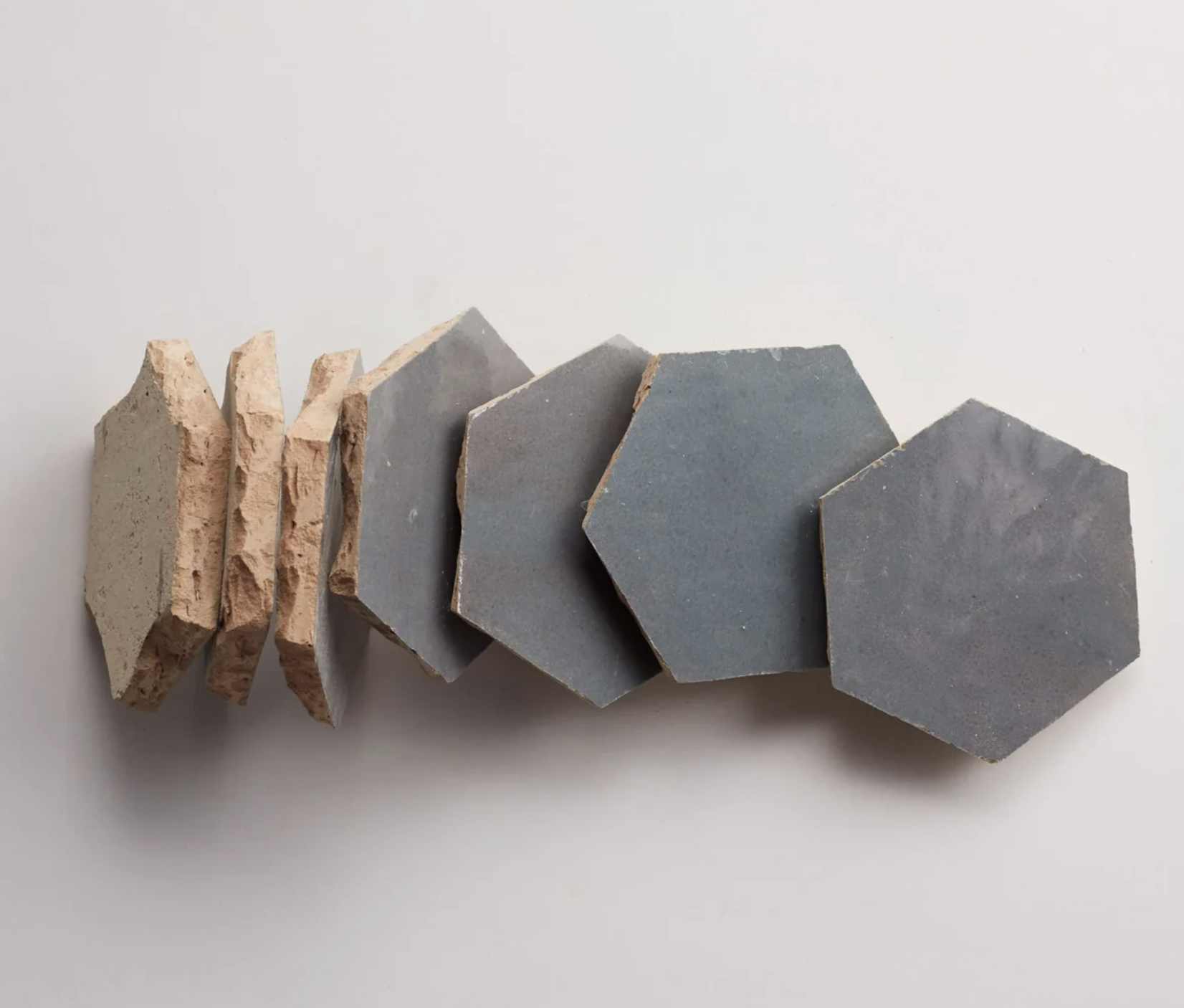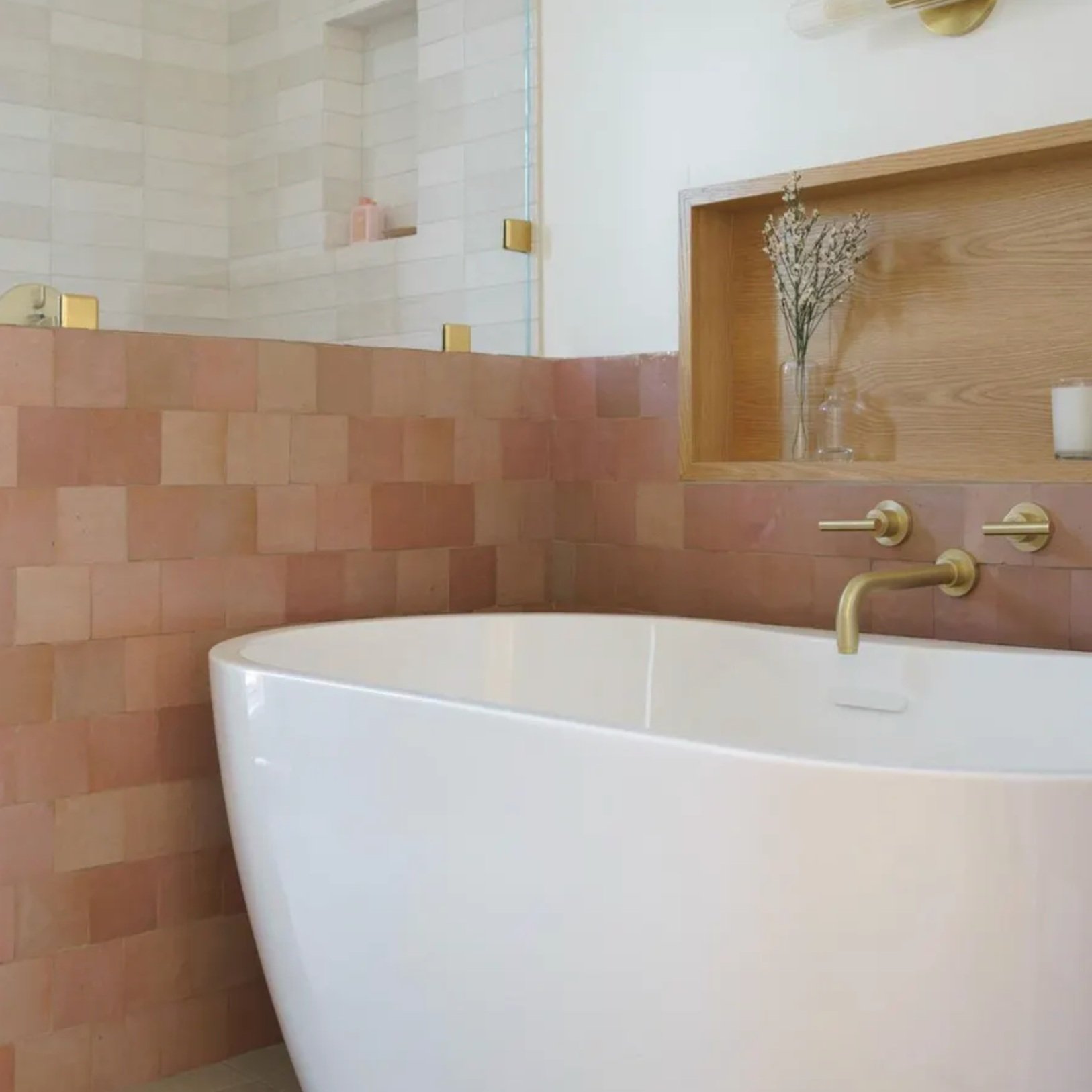Design Digest: What in the Zellige?
Everything you need to know about the tile that’s taking over.
what is zellige?
Zellige tiles (pronounced “zuh-leej”) are a type of handmade ceramic tile that originate from Morocco. They are known for their distinctive geometric patterns and bright colors, which are created using pigments that are mixed into the clay or painted onto the surface of the tile.
Zellige tiles are made using a traditional technique that involves shaping the clay by hand and then firing it in a kiln. Once the tiles are fired, they are glazed and then cut into various shapes and sizes. The resulting tiles have a unique, irregular appearance that is highly valued by designers and architects.
In recent years, zellige tiles have become increasingly popular in interior design, and are now available in a wide range of colors and patterns to suit different styles and tastes. While traditionally made from clay, modern versions of zellige tiles are also made using cement and other materials.
THE ORGIN STORY
The origin of zellige tiles can be traced back to the 10th century when Islamic architects and craftsmen began using glazed tiles to decorate mosques and palaces in the Middle East and North Africa. The word "zellige" comes from the Arabic word "zellig," which means "little polished stone," and refers to the small, geometric tiles that were used to create intricate patterns and designs.
Over time, the use of zellige tiles spread throughout the Islamic world, and they became an important part of the decorative arts of Morocco. Moroccan craftsmen developed their own unique style of zellige tile making, which involved using local clay and pigments to create a range of colors and patterns that reflected the country's cultural heritage.
In Moroccan architecture, zellige tiles were used to create elaborate mosaics and decorative elements in mosques, palaces, and private residences. The tiles were often arranged in intricate geometric patterns that symbolized the order and balance of the universe. The use of zellige tiles in Moroccan architecture reached its height during the 14th and 15th centuries when the Merinid dynasty was in power.
Today, zellige tiles continue to be an important part of Moroccan culture and are still used in traditional architecture and decorative arts. They have also gained popularity around the world as a unique and beautiful design element in modern interiors.
durability and longevity
Zellige tiles are known for their durability and longevity. Because they are handmade and fired at high temperatures, they are resistant to chipping, cracking, and fading. The glaze used on zellige tiles also helps to protect the surface of the tile from wear and tear.
With proper installation and maintenance, zellige tiles can last for decades or even centuries. However, it's important to note that they are a natural product and may require occasional repairs or replacement over time. This is particularly true in high-traffic areas or in places where the tiles are exposed to harsh weather conditions.
To ensure the longevity of zellige tiles, it's important to have them installed by a professional who is familiar with the proper techniques for working with handmade tiles. Additionally, regular cleaning and maintenance can help to prevent dirt and grime from building up on the surface of the tiles, which can help to prolong their lifespan.
maintaining your tile
Sealing and treating zellige tiles is an important part of their maintenance to ensure their longevity and to protect them from damage. Here are some guidelines on how to properly seal and treat zellige tiles:
Clean the tiles thoroughly: Before sealing or treating zellige tiles, it's important to clean them thoroughly to remove any dirt, grime, or stains that may be present on the surface of the tiles. Use a gentle cleaner and a soft-bristled brush or sponge to clean the tiles, and avoid using harsh chemicals that may damage the glaze or surface of the tiles.
Allow the tiles to dry completely: Once the tiles are cleaned, allow them to dry completely before applying any sealer or treatment. This will ensure that the sealer or treatment adheres properly to the surface of the tiles.
Choose the right sealer or treatment: There are many types of sealers and treatments available for zellige tiles, including penetrating sealers, surface sealers, and enhancers. Choose a sealer or treatment that is appropriate for your specific type of zellige tile and the level of protection you require.
Apply the sealer or treatment: Follow the manufacturer's instructions for applying the sealer or treatment to the tiles. Generally, you will apply the sealer or treatment using a brush or roller, making sure to cover the entire surface of the tiles evenly.
Allow the sealer or treatment to dry: After applying the sealer or treatment, allow it to dry completely according to the manufacturer's instructions. This may take several hours or even overnight.
Maintain the sealer or treatment: Once the sealer or treatment has been applied, it's important to maintain it regularly to ensure that it continues to provide the desired level of protection. This may involve periodic reapplication of the sealer or treatment or regular cleaning with a gentle cleaner.
By following these guidelines, you can help to protect your zellige tiles and ensure that they look beautiful for years to come.
Shop our favorites









